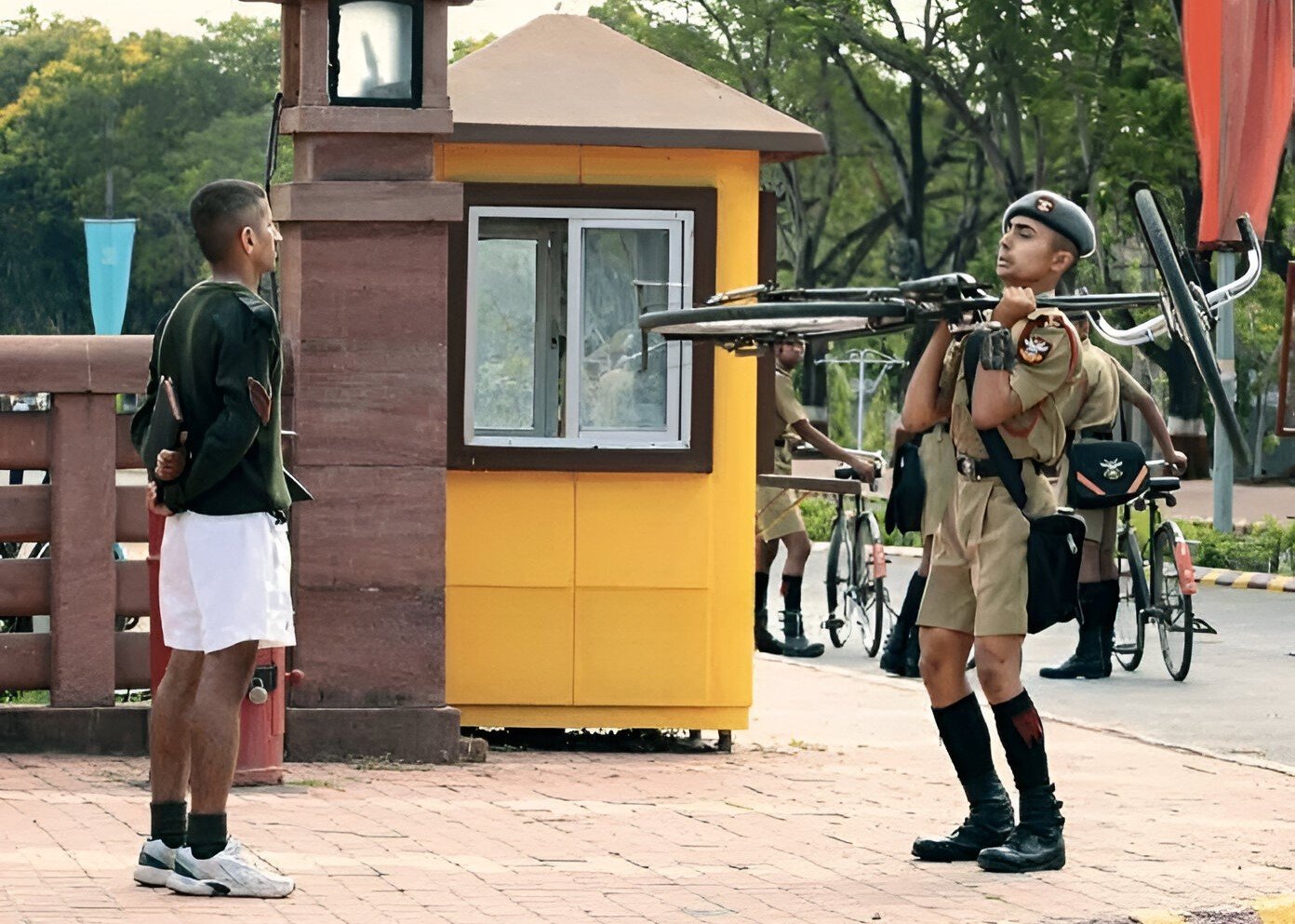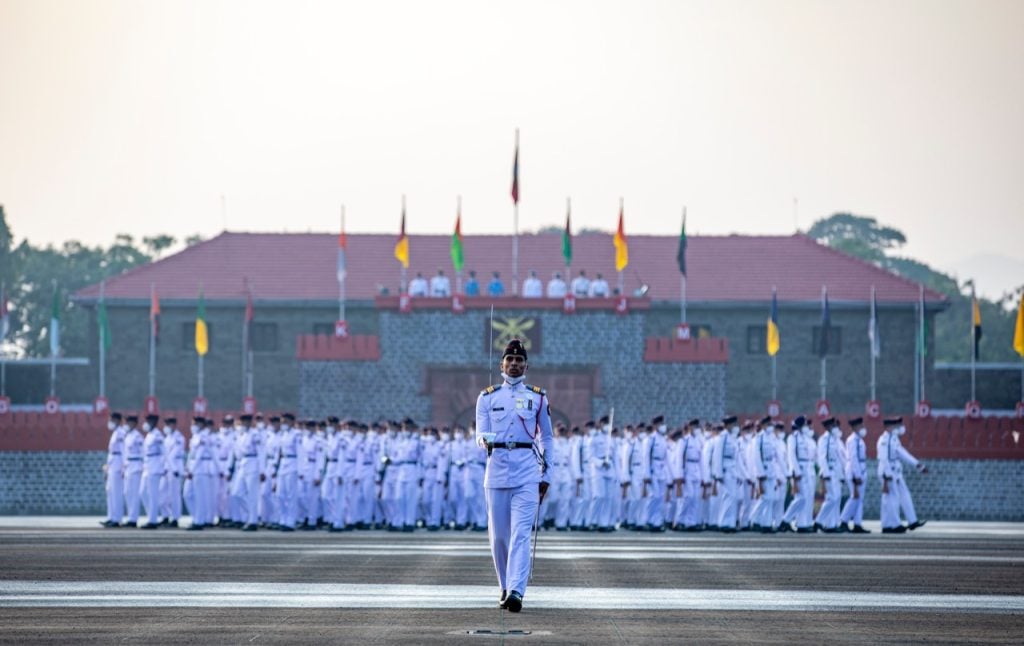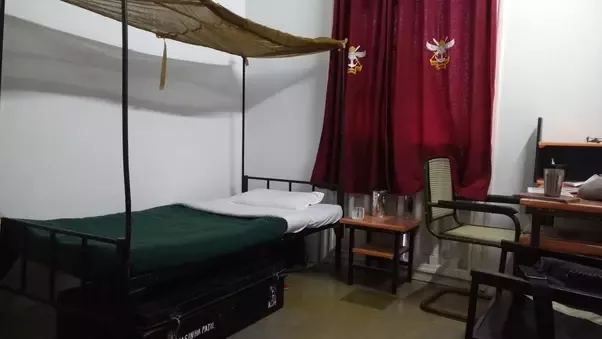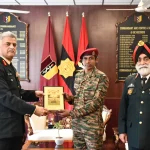The National Defence Academy (NDA), located in Khadakwasla near Pune, India, stands as the world’s first tri-service military academy, where future officers of the Indian Army, Navy, and Air Force are molded into leaders. Established in 1954 after recommendations from a post-World War II committee led by Field Marshal Claude Auchinleck, the NDA draws inspiration from institutions like the United States Military Academy at West Point.
Its sprawling 7,015-acre campus serves as a crucible for young cadets, emphasizing the motto “Service Before Self” to instill values of honor, discipline, and jointmanship. Over three years, cadets undergo rigorous training that combines academics, physical conditioning, and military skills, culminating in a bachelor’s degree from Jawaharlal Nehru University (JNU).
This article delves into the multifaceted life at the NDA, exploring the daily grind, training regimens, unyielding discipline, and vibrant cadet activities that shape these young individuals into defenders of the nation.
Admission and Initial Induction
Entry into the NDA is highly competitive, requiring candidates to clear the Union Public Service Commission (UPSC) examination followed by the Services Selection Board (SSB) interview. Cadets join after completing their 12th-grade education, typically at ages 16-19, and are divided into 18 squadrons across five battalions, each housing 100-120 cadets.
The academy’s squadron system fosters a sense of identity, with each squadron having a unique nickname, mascot, and history, promoting loyalty and camaraderie. Upon arrival, new entrants face an intense induction period, often described as “ragda” or toughening up, which includes physical challenges and orientation to military life. This phase, overseen by senior cadets and instructors, aims to build resilience but has raised concerns about potential abuse if not properly supervised.
A Day in the Life: The Structured Routine
Life at the NDA revolves around a meticulously planned daily schedule that leaves little room for idleness, starting as early as 4:00 AM and ending around 10:00 PM. The day begins with reveille, a wake-up call that instills urgency and efficiency.
Cadets quickly handle personal hygiene before heading to physical training (PT) sessions from 5:00 AM to 6:00 AM, which include running, strength exercises like push-ups and sit-ups, rope climbing, and obstacle courses. Breakfast follows, often a nutritious meal to fuel the demanding day ahead.
Morning hours are dedicated to drill practices, focusing on marching, parade techniques, and coordination to enhance teamwork and precision. Academic classes run from 8:00 AM to 1:00 PM, covering a broad curriculum that includes military history, strategy, sciences, and foreign languages up to B1 level.
Lunch, taken between 1:00 PM and 2:30 PM, provides a brief respite for bonding and relaxation. Afternoons shift to sports and extracurriculars from 3:00 PM to 6:00 PM, followed by an evening study period until 8:00 PM for academic review and preparation. Dinner is a swift affair from 8:30 PM to 8:50 PM, emphasizing informal interactions among cadets.
The day concludes with lights out by 10:30 PM, ensuring adequate rest for the next cycle. This routine, consistent across the two terms per year (Spring: January-May; Autumn: July-December), builds habits of punctuality and self-management.
| Time Slot | Activity Description |
|---|---|
| 4:00 AM – 5:00 AM | Reveille (wake-up call). Cadets quickly freshen up and prepare for the day, instilling a sense of urgency and punctuality. |
| 5:00 AM – 6:00 AM | Physical Training (PT). Includes running, push-ups, sit-ups, rope climbing, obstacle courses, and endurance exercises to build strength and stamina. |
| 6:00 AM – 7:30 AM | Drill and Parade Practice. Focuses on marching, coordination, and formations to enhance discipline and teamwork. |
| 7:30 AM – 8:00 AM | Breakfast. A nutritious meal in the mess hall to refuel after morning activities. |
| 8:00 AM – 1:00 PM | Academic Classes. Covers subjects like mathematics, sciences, history, military strategy, and foreign languages, with emphasis on critical thinking. |
| 1:00 PM – 2:30 PM | Lunch and Brief Rest. Balanced meal followed by a short relaxation period for bonding and rejuvenation. |
| 3:00 PM – 6:00 PM | Sports, Extracurriculars, and Military Training. Includes games like football, basketball, swimming, weapon handling, map reading, and tactical exercises. |
| 6:30 PM – 8:00 PM | Evening Study Period. Self-study, revisions, group discussions, or mentoring sessions to prepare for exams and reinforce learning. |
| 8:30 PM – 9:00 PM | Dinner. Quick, informal meal promoting camaraderie among cadets. |
| 9:00 PM – 10:00 PM | Leisure Time. Light reading, news updates, or casual interactions before winding down. |
| 10:00 PM – 10:30 PM | Lights Out. Mandatory rest to ensure recovery for the next day. |
Comprehensive Training: Building Body, Mind, and Spirit
Training at the NDA is holistic, divided into academic, physical, military, and service-specific components, designed to forge well-rounded officers.
Academic Training
Cadets pursue a three-year degree program in BA, BSc, or BTech, affiliated with JNU, with subjects ranging from physics and mathematics to humanities and computer science. Academics are rigorous, with daily classes emphasizing critical thinking and strategic knowledge, including military law and historical campaigns. As one alumnus recalls, academics play a pivotal role, with classes held after morning PT or drills.
Physical and Outdoor Training
Physical fitness is paramount, with PT sessions building endurance and strength. Cadets engage in cross-country runs, swimming, and adventure activities like rock climbing, mountaineering, and para-jumping. Camps such as Camp Green Horn (second term), Camp Rover (fourth term), and Camp Torna (sixth term) provide practical reinforcement, simulating real-world challenges. Personal anecdotes highlight the intensity; one cadet shared humbling experiences during cross-country runs, underscoring the physical demands.
Military and Service-Specific Training
Core military skills include weapon handling, tactics, map reading, and navigation. Army cadets focus on field engineering and endurance runs in full gear. Naval cadets train in navigation, seamanship, and watermanship at Peacock Bay, including sailing expeditions in Camp Varuna. Air Force cadets undergo flying training on Super Dimona aircraft (at least eight sorties) and skeet shooting. Since 2015, all cadets receive cross-service training to promote jointness.
The Pillar of Discipline: Honor Code and Rules
Discipline is the bedrock of NDA life, enforced through a strict honor code that demands impeccable conduct and accountability. Deviations result in swift penalties, including extra duties or restrictions, to ingrain integrity. Rules prohibit mobile phones and laptops during training, ensuring focus on duties.
The squadron system reinforces collective responsibility, with competitions like the Inter Squadron Championship Trophy encouraging disciplined performance. Veterans emphasize how discipline, commitment, and dedication are hallmarks of NDA training, preparing cadets for national defense. As one former commandant noted, proper oversight is crucial to prevent ethical lapses in delegation of training tasks.
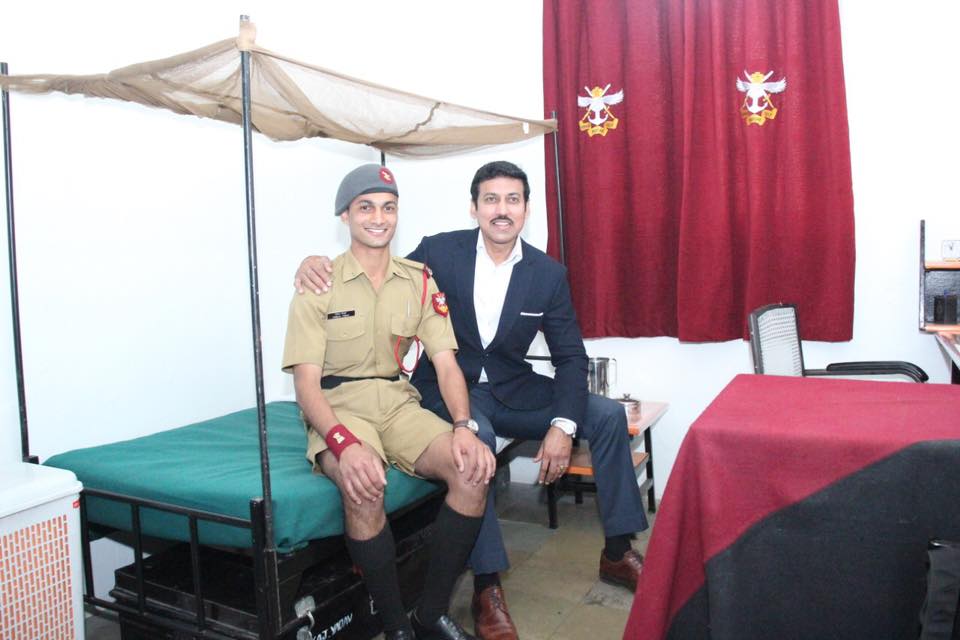
Cadet Activities: Beyond the Barracks
Amid the rigor, the NDA offers a rich array of activities to foster all-round development. Sports are integral, with facilities including Olympic-size pools, gymnasiums, football fields, polo grounds, and tennis courts. Cadets participate in hockey, football, basketball, volleyball, swimming, and more, building teamwork and sportsmanship. Adventure pursuits like trekking, water sports, kayaking, and windsurfing at the Watermanship Training Centre add excitement.
Indoor clubs cover arts, music, literature, public speaking, and debates, enhancing personality and creativity. Cultural events, seminars, and interactions with civilian institutions provide broader perspectives. The Passing Out Parade, a grand ceremony reviewed by dignitaries like the Chief of Defence Staff, symbolizes the culmination of training and the bonds formed.
Challenges, Rewards, and Lasting Impact
NDA life is not without challenges—physical exhaustion, homesickness, and the pressure of constant evaluation test cadets’ mettle. Yet, the rewards are profound: lifelong friendships, leadership skills, and a sense of purpose. Alumni often reminisce about the “fire within” ignited by squadron spirit and shared experiences. For many, like those who excelled academically and in combat, the NDA paves the way for advanced opportunities, including international training.
In essence, the NDA transforms impressionable youth into disciplined officers ready to serve with honor. Its blend of training, discipline, and activities not only prepares them for military careers but also instills values that endure a lifetime, embodying the spirit of “Service Before Self.”
8 Things To Know Before You Join NDA, IMA, OTA, AFA, NA
Life at the NDA: FAQs
Q1. What is the significance of the Passing Out Parade at the NDA?
The Passing Out Parade marks the successful completion of a cadet’s tenure at the NDA. It symbolizes the unity and camaraderie among the cadets as they bid farewell to their seniors and embark on their journeys to their respective service boards.
Q2. What is the daily routine of an NDA cadet?
The NDA’s daily routine is highly structured and disciplined. It begins with a rousing wake-up call, followed by physical conditioning, academic classes, meals, outdoor activities, and personal study time, culminating in lights out in the evening.
Q3. How important is discipline at the National Defence Academy?
Discipline is the cornerstone of life at the NDA. Cadets strictly adhere to the academy’s regulations, maintaining a highly organized daily routine and living environment. This disciplined approach is essential in shaping them into capable and dedicated officers.
Q4. What extracurricular activities are available for cadets at the NDA?
The NDA offers a diverse range of indoor and outdoor club activities, including sports, adventure pursuits, literature, arts, music, debates, and public speaking. These engagements foster the cadets’ all-round personality development beyond academics and military training.
Q5. How does the NDA’s training curriculum prepare cadets for their future roles?
The NDA’s training curriculum is a comprehensive blend of academic education, tactical and strategic training, outdoor adventurism, and service-specific specialization. This holistic approach equips cadets with the knowledge, skills, and resilience required to excel as officers in the armed forces.

